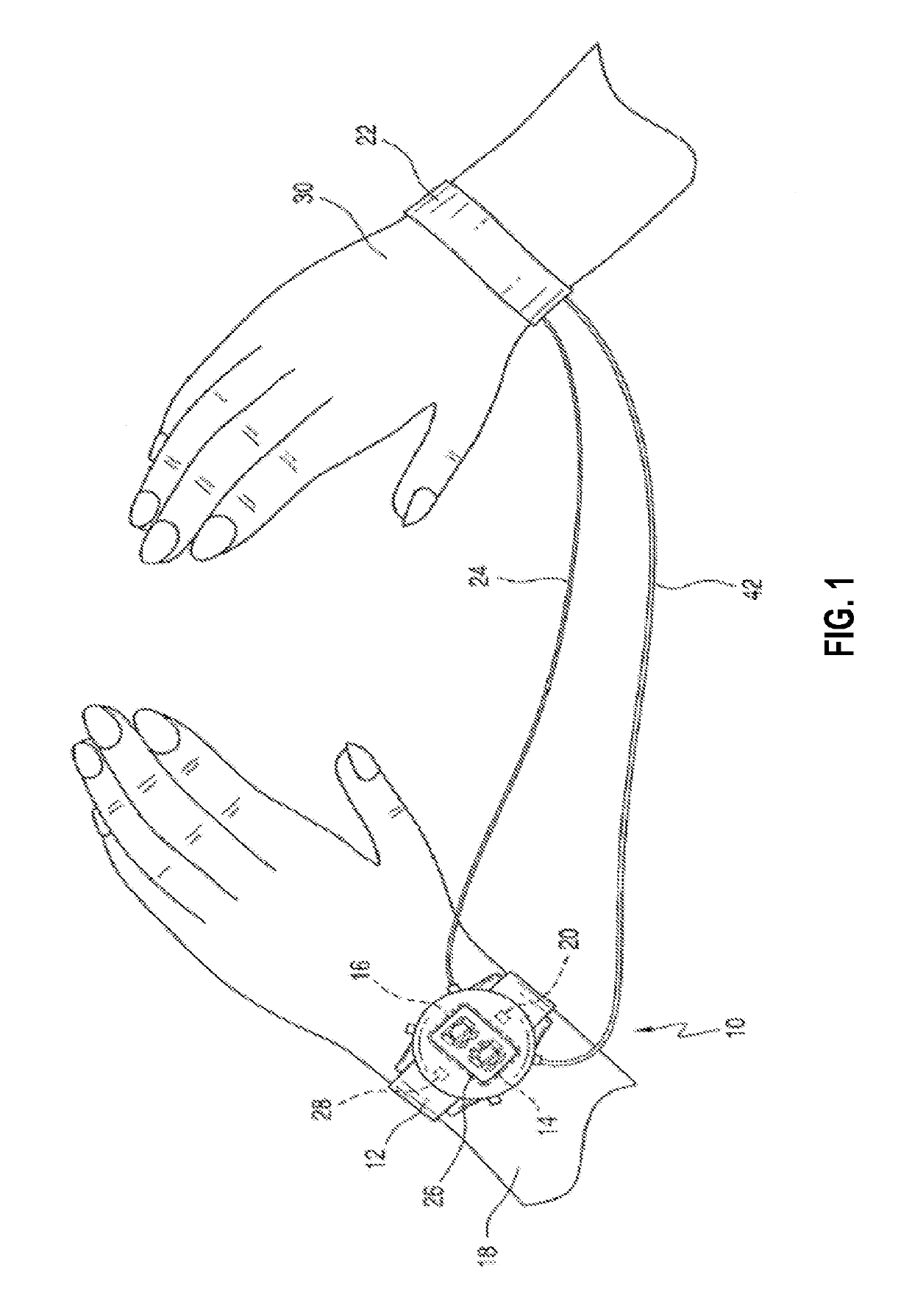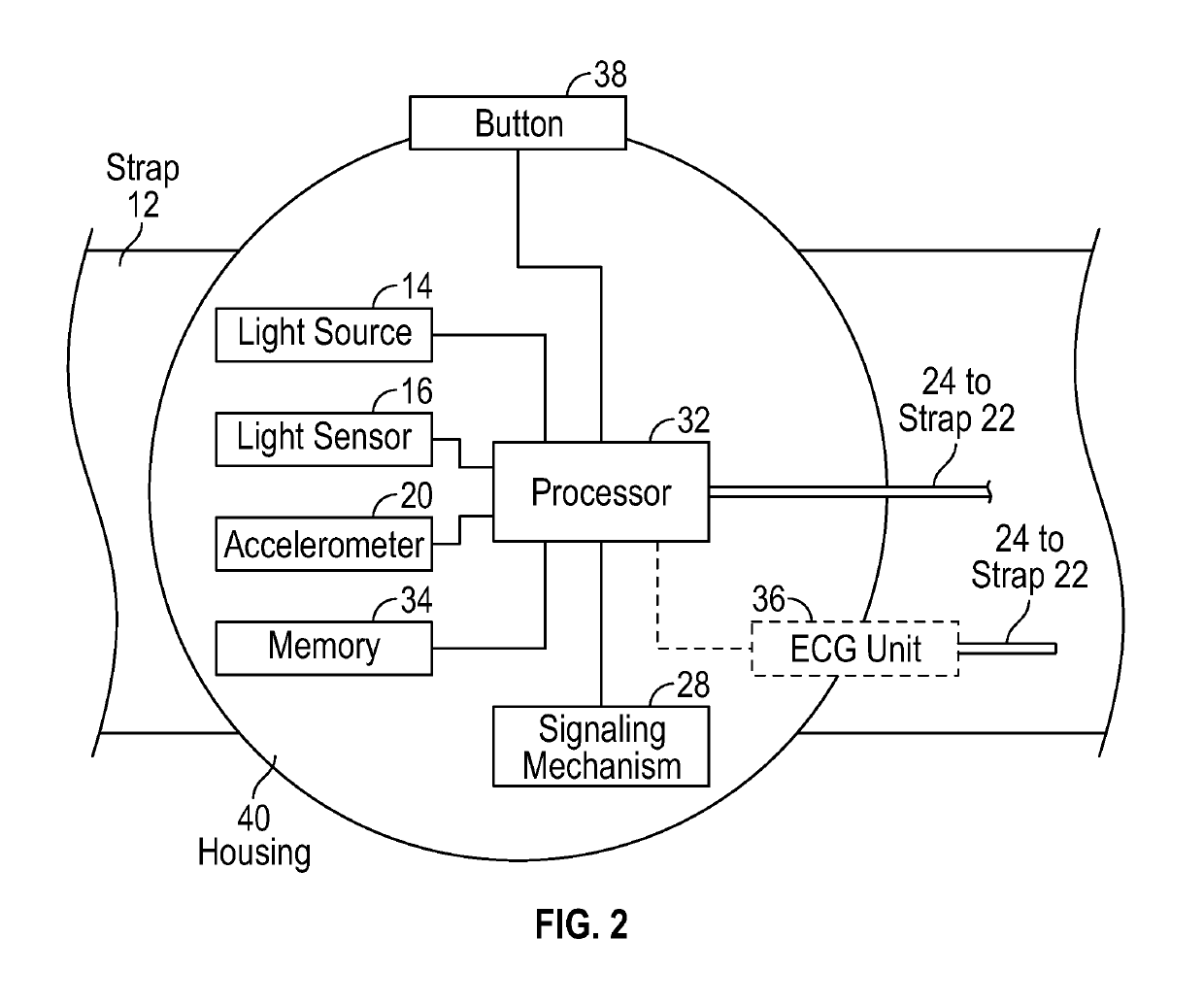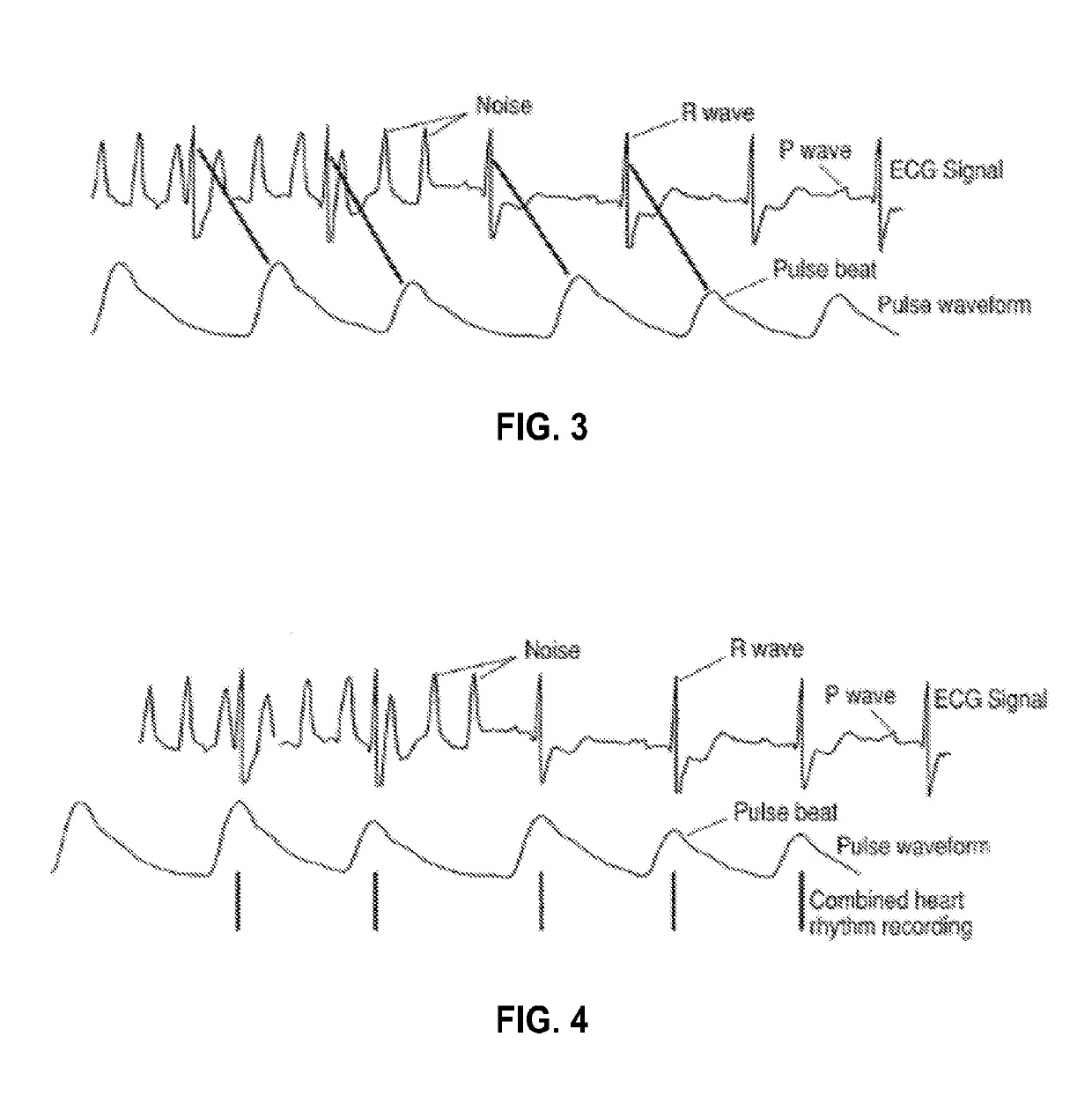Method and apparatus for detecting atrial fibrillation
a technology of atrial fibrillation and detection method, which is applied in the field of detecting atrial fibrillation and detecting apparatus, can solve the problems of irregular heart rhythm, high irregular heartbeat pattern, and irregular heart rhythm, and achieve the effect of improving electrocardiogram (ecg) recording
- Summary
- Abstract
- Description
- Claims
- Application Information
AI Technical Summary
Benefits of technology
Problems solved by technology
Method used
Image
Examples
Embodiment Construction
[0043]An apparatus and method for activating and switching on and off an ECG recording is provided. The apparatus and / or method may be worn or utilized on a daily basis, and may periodically record automatic pulse readings when a person is not moving to determine the presence of atrial fibrillation.
[0044]In an embodiment, the apparatus and method are configured for receiving a finger, or plurality of fingers, under a watchband, reducing the likelihood that the finger will move. In accordance with this embodiment, holding the finger fixed to the watchband is easier than holding the finger fixed to the housing, allowing for the finger to passively rest on the inside of the watchband in contact with the electrode.
[0045]The apparatus / method includes features to accurately measure ECG signals, without the need for actively pressing on an electrode associated with the ECG. The ECG may be recorded while a patient's arm is in a relaxed position.
[0046]In an embodiment, a patient may be infor...
PUM
 Login to View More
Login to View More Abstract
Description
Claims
Application Information
 Login to View More
Login to View More - R&D
- Intellectual Property
- Life Sciences
- Materials
- Tech Scout
- Unparalleled Data Quality
- Higher Quality Content
- 60% Fewer Hallucinations
Browse by: Latest US Patents, China's latest patents, Technical Efficacy Thesaurus, Application Domain, Technology Topic, Popular Technical Reports.
© 2025 PatSnap. All rights reserved.Legal|Privacy policy|Modern Slavery Act Transparency Statement|Sitemap|About US| Contact US: help@patsnap.com



